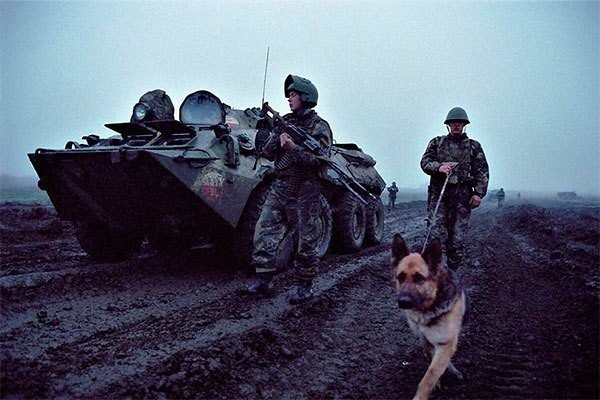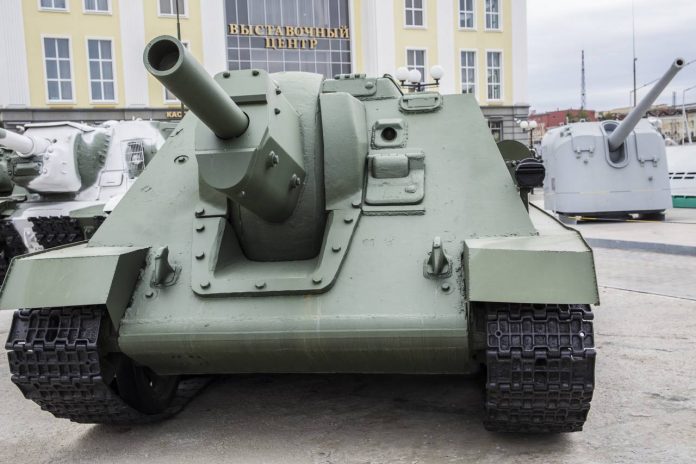
Continuing the theme of self-propelled sample units 1942 of the year, we decided to talk about the car, knows that most of our readers. About machine, which was developed in parallel with the already described contact ACS SG-122. About machine, which was a direct competitor of the SG-122.
so, Today, our heroine - SU-122. self-propelled, which was designed specifically for the support and maintenance of tanks. AND, respectively, It was established on the basis of the mass T-34.
Often, talking about the arming of the initial period of war, on the work of designers in 1941-42 years, we are confronted with the view, that the disadvantages of the arms caused by the speed of creating the machines themselves. Example SAU SG-122 SU-76M like it proves this conclusion. Similar, as an example SU-122. but, think, should still talk about it. A business, actually, much more difficult.
Background appearance SAU
Most of the readers of his attitude to the ACS formed after watching the movie Victor Tregubovich «In war as in war» (1968). Remember, «Self-propelled tank loved, I walk in the woods it led…»? by the way, many do not know, but it does rhyme of the Great Patriotic. Indeed soldier creativity. For the first time it played in the movie Nikolai Kryuchkov («star», 1949 city). Only the original version of the ACS was guideshoe.
Full text looked:
Tank tankette loved,
In its forest walks led,
From this novel
All Grove break.
So much fervor and fire
It was their appearance,
That not even a stump left
Ten miles in circumference!
Why did the tanks were needed self-propelled? It tankers! AND «fought» commanders of tank brigades and regiments for each such machine rigidly support. hoarse. Command requested to give at least a couple of machines to attack. And it is really needed. From this truly life depended on tankers! And it started long before the war.
The thing is, that tanks prewar and the first war period, for all the apparent power of weapons, had quite a serious flaw. Effective fire on the enemy tanks could carry over relatively short distances - 600-900 m. It is caused by the very design of machinery. Quite a limited review and the lack of gun stabilizer. Or fire on the move «good luck» with long range, or under enemy antitank guns, a short distance. clear, anti-tank guns that have a great advantage in this embodiment.
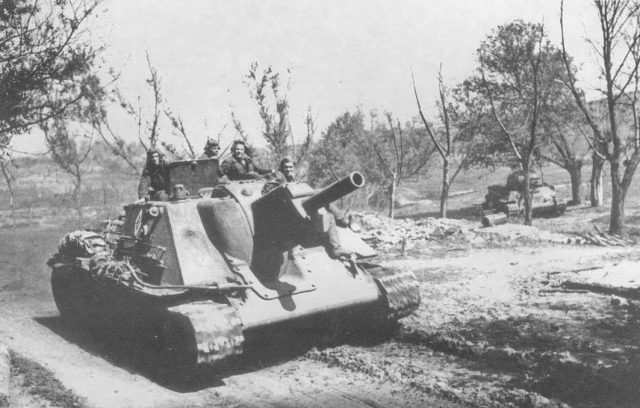
It was then, and included the work of the ACS. Cars, possessing instruments of larger calibers, who fired from behind the advancing tanks (not necessarily direct fire) and suppressing enemy anti-tank battery fire at the very short period of time, needed tanks to enter the distance of effective work of their own weapons.
During the period, when the tanks were inactive, it was possible to suppress the use of TCP field artillery. Then and there requirements for rapid transfer of the guns from traveling to combat and back. but the tanks «go». And go quickly. It was then, and there was a need for artillery, which could not keep up with the mobile tank units.
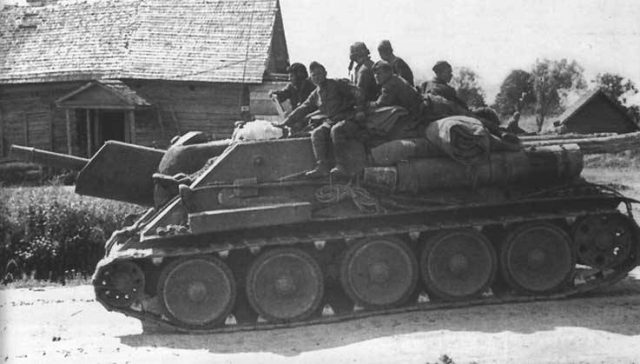
Remember era artillery tractors? This is just an attempt to increase the mobility of field artillery. Basically, create a tractor, able to keep up with the tank units, can. Similar, how to create a chassis for guns, which would withstand such movement. But it looks unrealistic idea about the effective operation of the battery, who start a fire without intelligence and artillery gunners at the forefront. Yes, and management of such batteries is more than problematic.
In this way, mass appearance in various self-propelled RKKA, as in the other belligerent countries, it was during 1942-43 years - this is the general trend of development of armored vehicles. The development gave rise to the development of tanks, artillery support for these machines. infantry support not, namely tank support. And this trend is developing in the present tense.
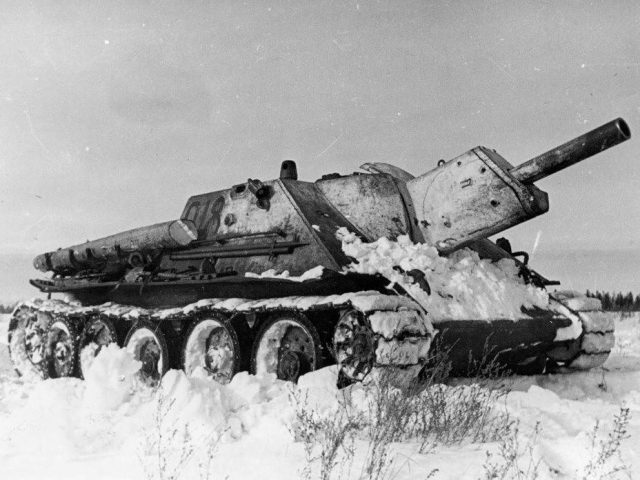
About ACS itself
Returning to our heroine, you must say, that this car is a logical continuation of the development, that existed in Soviet industry in the prewar, and during the war. That's why our vehicles look like brothers at that time (or sister). Certainly not twins, but precisely brothers.
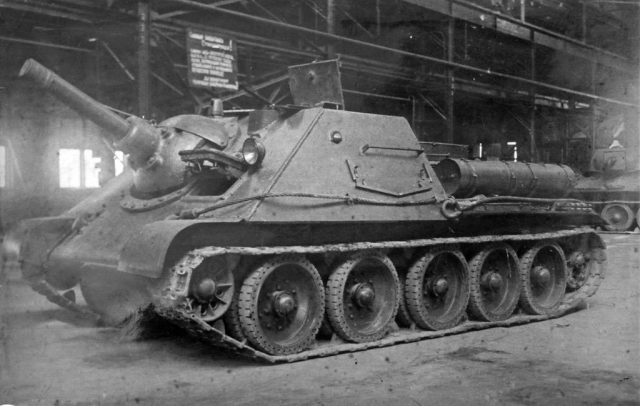
Sometimes raise questions guns, used. Today, from the future, we can already evaluate the effectiveness of the instruments of the time quite objectively. However, at that time it was not possible. Advantages and disadvantages of guns often were detected already in service. Therefore, the decisions were made based on an assessment of guns and howitzers experts. Gauges and even the same tools, to be used in ACS, We determined very specifically.
15 April 1942 , the plenum of the Artillery Committee GAU RKKA. We were invited not only members of the committee, but also representatives of military units, heads of factories and design bureaus, specialists from the People's Commissariat of arms (IEC). It is believed, that it is at this plenum and set specific objectives for creating full-fledged Soviet SAU. There were also identified and guns, which it was proposed to use for the new machines.
For the following self-propelled artillery systems have been identified.
M-30 to support the infantry SAU proposed set 76.2 mm gun ZIS-3 or 122mm howitzer, sample 1938 of the year.
To destroy heavily fortified positions, engineering and defensive zones proposed to use 152.4 mm howitzer gun-ML-20, sample 1937 of the year.
SU-122 was designed precisely with these recommendations. And considering, that the car developed almost in parallel with the SG-122, This self-propelled gun in general record for speed of creation. Well, imagine the work speed. In October 1942 year GKO decided to begin the development of the car on the basis of T-34 (19 October, the GKO №2429ss). 29 October special design team UZTM LI. Gorlickie (NV. Couric, G. F. Ksyunin, A.D. Nekludov, KN. Ilyin and I.I. Emmanuilov) presented a draft of the object U-35.
30 November 1942 , began production tests. FROM 5 by 19 December UZTM designers and plant №592 already Gorokhovetsky landfill conduct state tests. And in December, 1942 , the machine has already been tested, put into service and is recommended for serial production. The first pre-series cars went to the troops (10 old units (U-35) structure chopping). Serial machines went in January 1943 of the year. Machines armed with self-propelled artillery regiment SS medium. By 16 units in the regiment.
A brief look at the machine itself more closely. Installation mounted on the base of the tank T-34 (T-34-76). Conning tower is installed in front of the case. felling welded, of armor rolled sheets of different thicknesses - 15, 20, 40 and 45 mm. Protivosnaryadnym action amplified rational angles of inclination bronelistov. The forehead was integral and had different angles - 57 and 50 degrees. For protection against enemy infantry and an additional review, the crew there were holes in the armor plates, closed armored caps across the circumference of the machine.
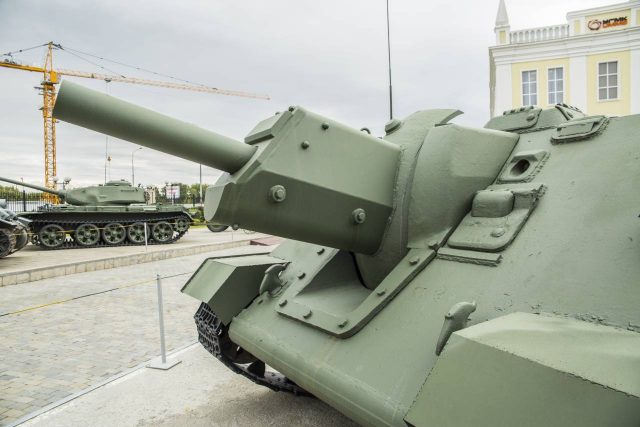
On the roof of the cabin had two turrets. Commander and observation (cannoneer) to install Hertz panorama.
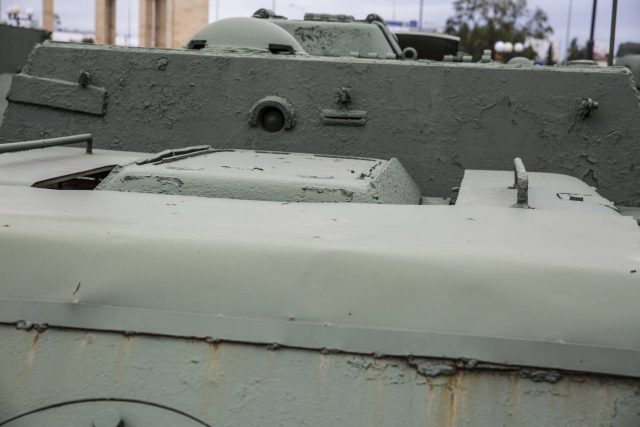
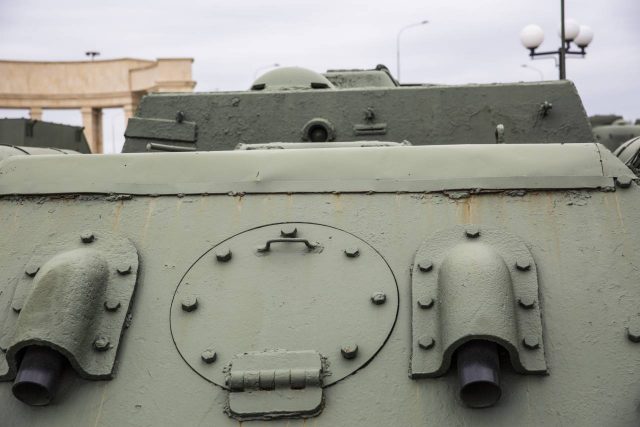
Landing-landing crew on the roof of the cabin was equipped with a rectangular hatch cover with armor. Interesting, that the driver's hatch, which had inherited from T-34, landing mechanics are not used. This is purely a manhole.
Battlefield surveillance was carried out using special SLR viewing devices. Devices were placed in three places. On the forehead of the machine, starboard and stern.
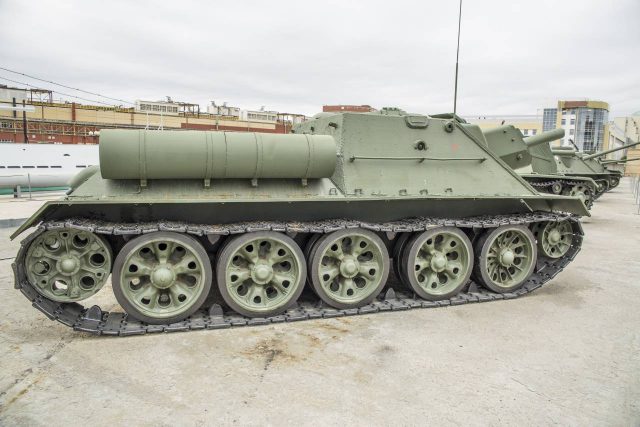
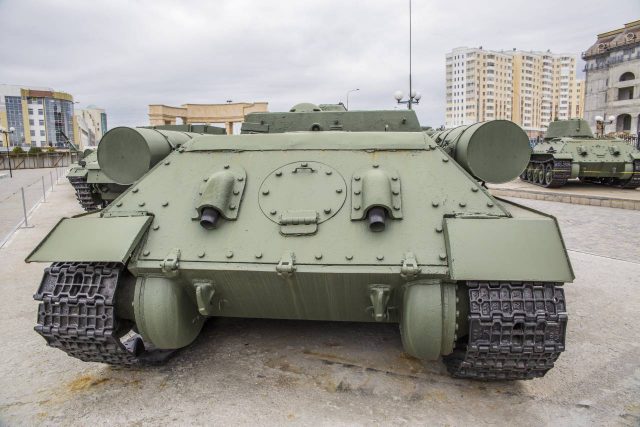
Armed with the U-35 was the standard howitzer M-30 with interrupted screw. The gun mounted on a special, attached to the bottom, Tumbe. Angles were aiming: vertically from -3 to +25, on the horizontal sector 20 degrees (+/- 10 degrees). Aiming guns made by the panorama of Hertz. howitzer, because of design features, I had a fairly small rate - 2-5 rounds per minute. ammunition 36 rounds of separate loading.
In the fighting compartment are just two full-time sub-machine gun and PCA 20 discs with cartridges (1420 PC).
Feedback is provided through a station F-9. For internal communication used tank intercom TPU-3F.
Propulsion separation practically did not change and was of the same type with a T-34. But it was necessary to strengthen the front of the chassis. In view of the apparent overload the machine chuck, front suspension components tank could not withstand the loads.
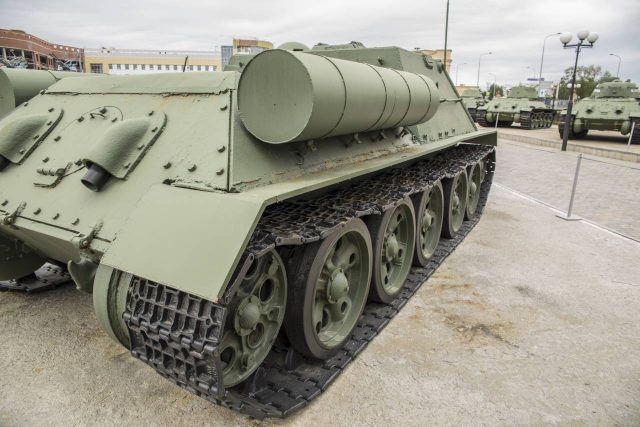
The path to the front
In general, the machine caused a lot of complaints. In most studies, these disadvantages are treated as insignificant. But, on the other hand, in most materials only mentioned under test in parallel SG-2 Mytischinskogo plant № 592. He understood. Otherwise, it will be necessary to clarify the beginning of production of the SU almost immediately after the test. Try to understand, What really happened in Sverdlovsk.
clear, that have (or SU, both documents UZTM) -35 sea trials took place at the "Hurray!". Considering, that by the time T-34 tanks were going exactly to UZTM. More or less successful and firing can be called. But the rest… The thing is, that the State Commission has made quite an undesirable conclusion for UZTM. The conning tower on Y(ARE)-35 I do not just do not get. It was dangerous for the crew.
«The Commission considers it necessary to instruct Uralmashzavod NKTP modify the sample self-propelled 122 mm howitzer, taking as a basis the arrangement of the crew compartment of the tested propelled 122mm howitzer №592 plant and removing flaws, expressed in this report. Modified example of self-propelled howitzer subjected to testing in the factory to the final decision on the introduction into service of artillery of the Red Army«.
But there is another question. If Mytishchi plant number 592 I did such a good car in the same base, Why adopt alternative UZTM? The answer is simple and incredible. SG-2 is not passed… sea trials! It undercarriage SG-2, Tank chassis T34, It could not stand the load. And the reason was not in any reloading chassis or general design flaws SG. The reason for the T-34. It is itself a tank, on the basis of which the prototype of the SG-2 was established, It proved to be defective. Thus ended the story of SG-2.
Talk about some sabotage or fraudulent machinations of designers is not here. Just because, Mytishchi plant that generally could not entrust the production of SU. The plant already, before the test, intended for the production of light tanks. Release of the SU-122 has been scheduled for December UZTM 1942 of the year (25 units) Resolution number of T-bills 2559 «On the organization of the production of artillery Uralmashplant and plant number 38».
so, What was the serial cabin in the SU-122? The answer is again standard. own! Not in(ARE)-35 and not SG -2.
Here is a list of changes, are made to the bridge in December, at the initiative of the head of the project group NV. Kurin (Gorlitskiy was on trial), Deputy People's Commissar for Tank Industry of the USSR, Chief Designer of the Chelyabinsk Tractor Plant F. I. litter, chief designer of the plant №9 F.F. Petrova, his deputy AN. Bulasheva, Chief Designer UZTM ND. Werner and voenpredov led by G.Z. Zuher.
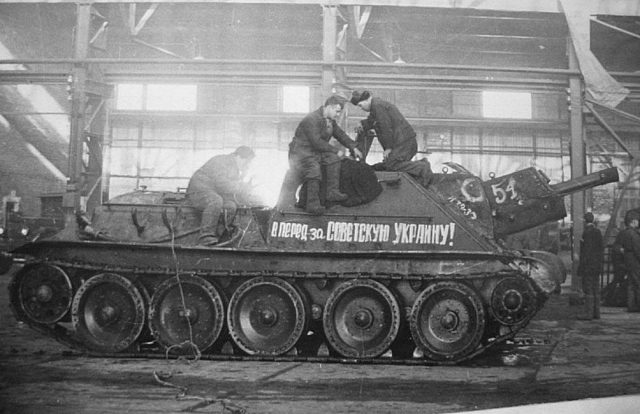
On the roof instead of the commander's turret cap appeared three hatches for observation periscope sight. The commander is now used periscopes PTK. Sunroof felling (however univalve, Unlike SG-2). Changed placement BC. It actually repeated the decision KB Mytishchi plant.
Installing periscope made it possible to move the seat forward commander. This increased the net volume cutting. A commander was now to serve as a radio operator and more, and gunner vertically. Not the best option, but congestion commanders of Soviet tanks, we talked more than once.
The same changes undergone and gunner. Peepholes were removed. Instead, they enjoy the same observation periscope. He was removed left fuel tank, which is just above the gunner. In this way, and in this sector has increased the volume of felling.
For the first time took care of charging. Now jump seats were provided for them. When driving charging had their regular places, and fight back do not interfere with work.
Has undergone changes and the installation forehead. He became easier. disappeared «step». In this way, we can say that, that the concept of maximum use of the T-34 chassis refused. Housing decided to remake. In eliminated reservations slots and openings.
combat application
Talk about, that SU-122 released in small series, foolishly. 638 units - this is quite a lot. but, speak, The car was fortunate, too difficult. Sometimes it seems, The car is designed to 1941 of the year. Or beginning 1942 it. The frontal armor in 45 mm while, when the Germans were PAC-40, when the first «Tigers» We have already been in combat (Fall 42nd, Sinyavino), when German «four» and «ştugi» They received their "long arm", i.e, long-barreled 75-mm cannon ...
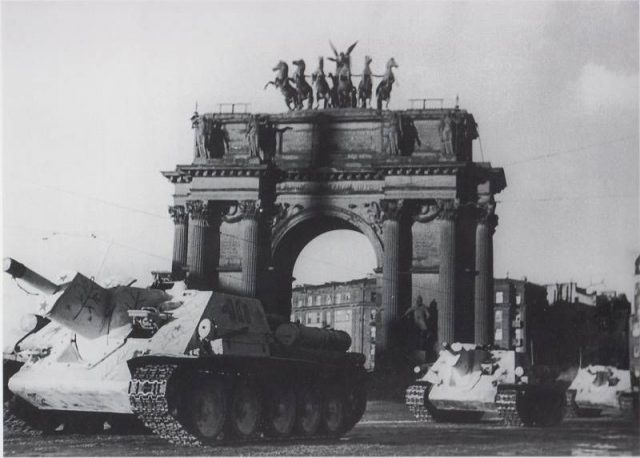
Of course, it could be argued that, what is intended is a tool. Assault gun. but, this tool should work directly in the second tier. But as soon as the SU-122 out on visibility (1000 m), as immediately got defeated by the German T-4 and "shtugov". About the "Tigers" in such a situation and say terrible. The forehead of the Soviet machine was clearly nedobronirovan. An example of the Germans and their ACS we can not decree. «funeral» this machine Battle of Kursk. That's where all the car burned, sundry.
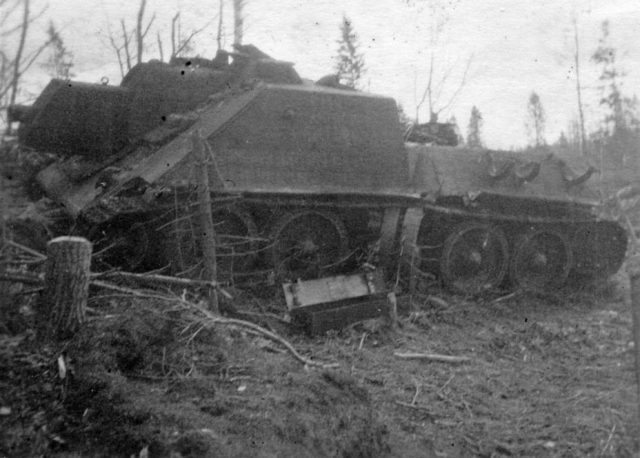
Transition after the Kursk on the SU-85 and fired by SU-122, how we think, too, it was a mistake. The car could well perform the duties of assault weapons and more. But as part of armored brigades. Battery SU-85 and SU-122 Battery. Just one would be doing his job. 85 rifles Her, which in fact were antitank, beaten to tanks, howitzers and 122-th - to destroy everything else: pillboxes, bunkers, infantry. But something happened, what happened.
by the way, Germans, which took several SU-122 as trophies, they were used with great benefit to themselves. Even the name of the machine have not changed - StuG SU122(r).
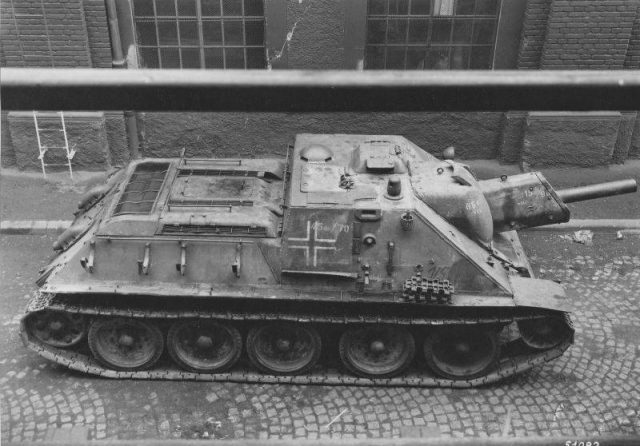
Already in 1944 the SU-122 became a rarity. The shelves, where they were, We tried not to send the machine for repair, and on-site repair. Otherwise the machine replaced the SU-85. But in Berlin, 1945, these vehicles were. Little, but they were.
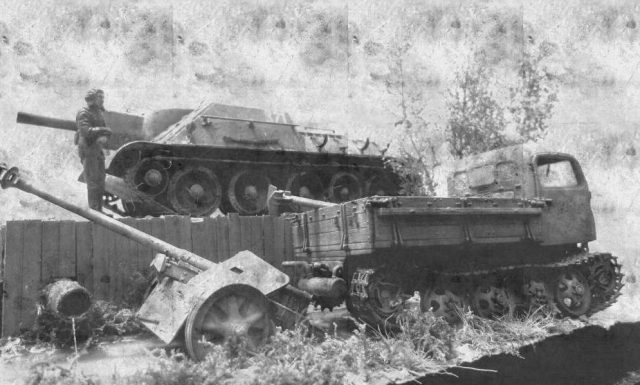
Today, the only SU-122, which has been preserved in its original form, It is a machine (board room 138) Lieutenant VS. I am accustomed numbered 305320. Unfortunately the combat path of the machine is known little. Machine from the 4-th battery in 1418 the first SAP 15 Panzer Corps 3rd Guards Tank Army. He was shot down in the battle for the village of Nikolskoye Sverdlovsk region Orel region 24 July 1943 of the year. Commander of the machine and the mechanic were wounded. The gunner and the castle killed. The machine is sent in for repair.
all in all,, to our knowledge, in Russian museums is today 4 Machines of this type.
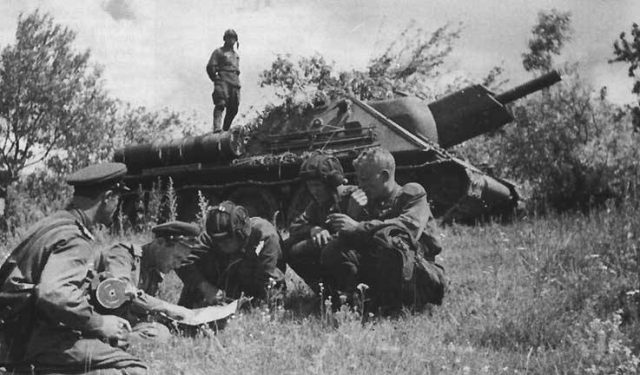
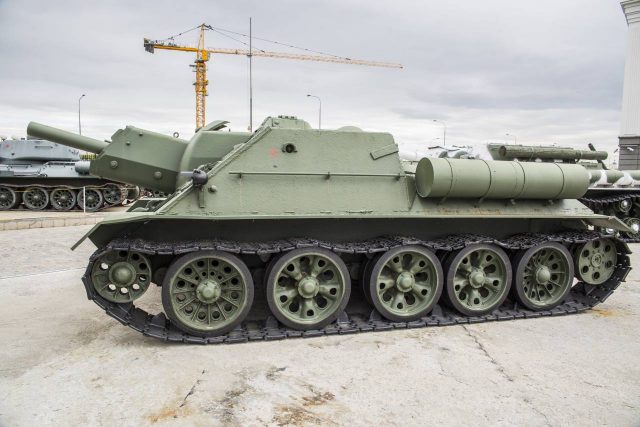
Well, the traditional performance characteristics of SU-122:
Combat weight - 29,6 t.
crew - 5 human.
The number of issued - 638 pcs.
dimensions:
Hull length - 6950 mm.
cabinet width - 3000 mm.
height - 2235 mm.
clearance - 400 mm.
booking:
Lobe housing - 45/50 ° mm / deg.
Bort Corps - 45/40 ° mm / city.
Feed housing - 40/48 ° mm / deg.
bottom - 15 mm.
Corps Roof - 20 mm.
Lobe cuttings - 45/50 ° mm / deg.
gun mask - 45 mm.
Chopping board - 45/20 ° mm / deg.
Forage chopping - 45/10 ° mm / deg.
weaponry:
Cal and brand rifles - 122 mm Howitzer M-30C.
Gun ammunition - 40.
driving performance:
Engine power - 500 HP.
The speed on the highway - 55 kmh.
Speed over rough terrain - 15-20 kmh.
Cruising on the highway - 600 km.
Gradeability - 33 °.
To overcome the wall - 0,73 m.
Trench - 2,5 m.
Fording - 1,3 m.
/Alexander Staver, Roman Skomorokhov, topwar.ru/








